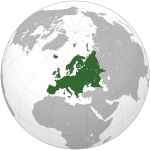Castor au Royaume-Uni
Apparence


Le castor au Royaume-Uni est la population de Castor fiber qui s'est développée au Royaume-Uni depuis sa réintroduction au cours du XXIe siècle, après avoir été exterminée du pays dès le XVIe siècle.
Histoire ancienne
[modifier | modifier le code]Intensément chassés pour leur fourrure et leurs glandes, les castors disparaissent d'Angleterre et du Pays de Galles au XIIe siècle puis d'Écosse au XVIe siècle.
Au XXIe siècle
[modifier | modifier le code]Dans la culture
[modifier | modifier le code]En anglais, castor se dit beaver. Le verbe to beaver signifie « travailler vigoureusement »[1].
Annexes
[modifier | modifier le code]Notes et références
[modifier | modifier le code]- « Beaver », Merriam-Webster Dictionary.
Bibliographie
[modifier | modifier le code]- (en) Josh Davis, « Scottish beavers are now a protected species », sur nhm.ac.uk, Natural History Museum,
- (en) Tammana Begum, « Record numbers of beavers are being introduced to the UK », sur nhm.ac.uk, Natural History Museum,
- (en) James Ashworth, « Beavers reintroduced to London after 400 years », sur nhm.ac.uk, Natural History Museum,
- Kitchener AC & Lynch JM (2000) A morphometric comparison of the skulls of fossil British and extant European beavers, Castor fiber ; Review No 127. Scottish natural heritage.
- Kitchener A & Conroy J (1997), The history of the Eurasian Beaver Castor fiber in Scotland, Mammal review, 27 (2) : 95 - 108 (résumé).
- Conroy, J. W. H., & Kitchener, A. C. (1996). The Eurasian beaver (Castor fiber) in Scotland: a review of the literature and historical evidence. SNH Review ([PDF] 51 p.).
- Webb A, French D & Flitsch A (1997) Identification and assessment of possible beaver sites in Scotland. Scottish natural herit age research, Survey and Monitoring Report No. 94.
- http://www.scottishbeavers.org.uk
